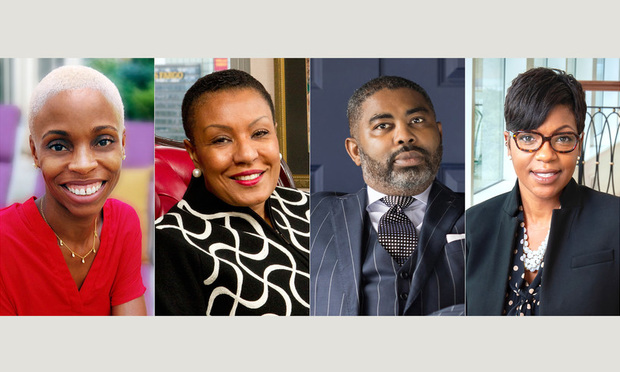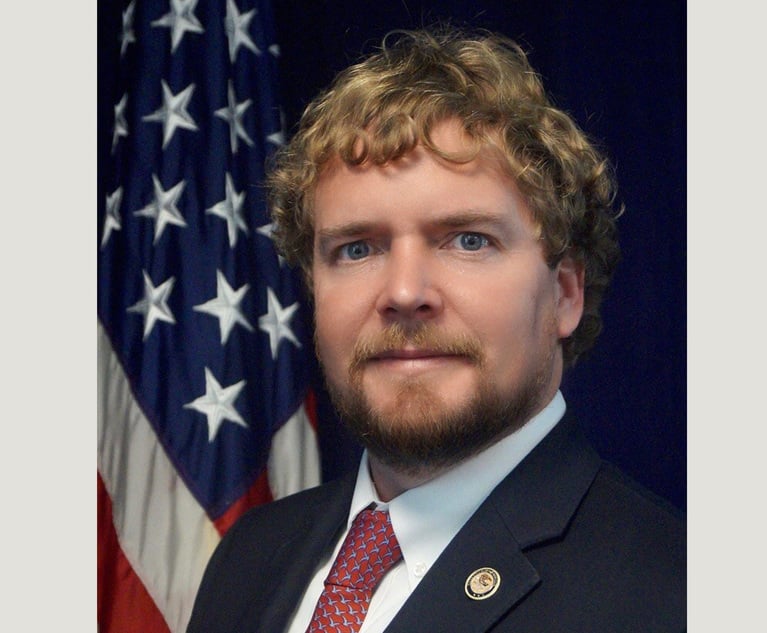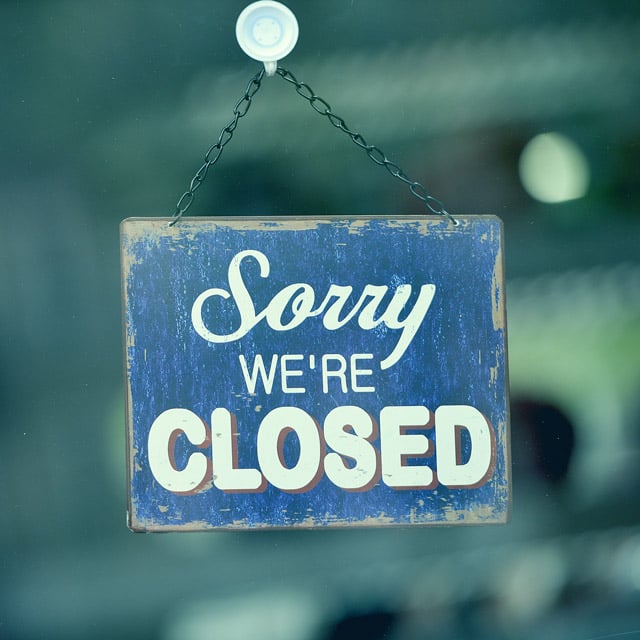Talent or Token? Lawyers Say Diversity Still Can Be Just for Show
A steady stream of initiatives has scarcely increased the ranks of lawyers of color in Big Law—amid concerns that some are used as "window dressing" for client pitches.
March 28, 2019 at 02:07 PM
9 minute read
 Rebecca Smith (from left), Leah Ward Sears, Donald Prophete and Tori Silas.
Rebecca Smith (from left), Leah Ward Sears, Donald Prophete and Tori Silas.
For more than a decade, big law firms have been publicizing their efforts to increase the proportion of women and lawyers of color in their ranks, from stepped-up recruiting efforts to diversity committees to affinity groups.
Meanwhile, general counsel have issued multiple “calls to action” demanding more diverse lawyers on their pitches and matters—most recently sparked by Paul, Weiss, Rifkind, Wharton & Garrison's December announcement of an all-white class of newly promoted partners.
Even so, in Atlanta as elsewhere, “the increments of change have been really small and really slow,” said Rebecca Smith, executive director of the State Bar of Georgia's Diversity Program.
According to statistics from the National Association for Law Placement, minority partners' representation in Big Law nationally has scarcely increased in the last decade, rising from 6 percent in 2009 to 9.1 percent in 2018.
“Why is that? With all the effort and work people are putting into diversity and inclusion, why are we not seeing the gains we would expect?” Smith asked.
“There's a lot of diversity for diversity's sake,” said one African-American woman who works in the Atlanta legal community, speaking on condition of anonymity. “Diversity is the word du jour, and firms need to position themselves to appear diverse and inclusive. It's something any minority attorney can relate to, whether a rainmaker or someone trying to build a book of business.”
But all the talk hasn't meant meaningful increases in actual lawyers of color doing client work, she said.
A recent racial discrimination suit brought by an African-American woman associate in North Carolina alleging her former firm used her as a “diversity prop” to impress clients also suggests as many steps backward as forward.
“We've made great strides, but it's been in baby steps,” said Leah Ward Sears, who was the first black woman lawyer at Alston & Bird's predecessor firm, Alston Miller & Gaines, in 1980 and went on to become the youngest-ever Georgia Supreme Court justice.
Back then, Sears said, “it was pretty obvious that you weren't going to get the same kind of opportunities that were going to young men who looked like the partners.”
“It's better than just tokenism now,” said Sears, now a partner at Smith Gambrell & Russell, and a law firm leader since leaving the bench in 2009. “But we have not come as far as we need to. It's not a walk in the park for any minority now at any firm.”
Overall, minorities make up 13.9 percent of Atlanta lawyers in Big Law, with 7.1 percent female. But only 8 percent of partners are minorities, of whom 2.7 percent are women, according to NALP. Of Atlanta partners, only 1.1 percent are black women, which NALP calls the “most dramatically underrepresented group at the partnership level.”
There has been progress. When the Georgia Association of Black Women Attorneys was founded in 1981—with Sears as its first president—its entire membership “could fit in someone's living room,” said its current president, Liz Broadway Brown, who recently made partner at Alston & Bird.
Now GABWA has more than 600 members statewide, Brown said, but “we still have a long way to go.”
Diversity 'Window Dressing?'
Diverse lawyers, like any others, need good work to advance. Sears and other Atlanta lawyers of color said they've heard instead of minority lawyers being included in pitches as window dressing, and receiving neither origination credit nor work.
Even so, they were surprised by the egregiousness of the discrimination claims that the North Carolina associate, Sharika Robinson, has made against her former firm, Robinson, Bradshaw & Hinson.
Robinson, who'd completed two federal clerkships, said in the suit that the firm appeared committed to advancing diversity, but in reality black and women lawyers “are staffed on cases and matters when clients demand diversity, then are assigned busywork with no meaningful impact.”
The 140-lawyer firm also used Robinson's photo in marketing materials to show its diversity, even though it only had two black associates, the suit said.
Robinson repeatedly raised objections, but the firm ignored them, according to the suit, and instead retaliated, cutting her off from any substantive work and creating a hostile work environment. Robinson Bradshaw has denied the discrimination claims and in a statement said the firm is “committed to diversity and inclusion.”
“If someone raises an issue and they're stonewalled or it's not addressed, then you've got a bigger issue,” said Brown, the GABWA president. “Firms doing it right are having the difficult conversations.”
Smith at the Georgia Bar said she knew of one African-American lawyer whom a firm hired on contract for a specific engagement because the client RFP required a person of color working on the file. The lawyer “wondered if they were there for window dressing, because they were not getting substantive work,” said Smith, who is also African-American.
While Smith did not know how common window dressing on pitches is, she said the question always comes up at diversity CLEs and panels. “The topic is always there.”
Using lawyers of color to add some diversity to pitches definitely happened 10 to 15 years ago, Tori Silas said, when she was a beginning associate, but she's not sure how widespread it is now. Silas, who is African-American, just returned to private practice as a partner at Nelson, Mullins, Riley & Scarborough from Cox Enterprises, where she was senior counsel and its first privacy officer.
“It wasn't uncommon for minority associates to be included in pitches but to never touch the work,” Silas said, based on what she heard from law school and bar association colleagues. “People weren't even aware that their information was being included in the pitch.”
Sears said that in her decade back in private practice she has not seen black women or other diverse lawyers being used as “props” on pitches, but she's heard from “general chitchat” that it still happens a lot.
“I don't allow that to happen in my space—if I see it,” she said. “But there are many firms that don't have a 'me' there to say that.”
Lack of awareness continues to be part of the problem, Sears said. She observed that the composite photo of Paul Weiss' 12 new white partners “jumped off the page,” even though the firm's leaders missed it.
“When you get to a certain level, you don't see everything,” she said, noting that this applied to her as well. “I'm not an associate. I'm on the executive committee.”
“You don't want to be in that position where you can't see, but everyone else can,” she added. “The emperor often wears no clothes.”
GC Lip Service?
Not everyone cheered a January “call to action” letter from more than 170 GCs and chief legal officers who vowed to direct their outside counsel spend to firms demonstrating diversity and high-quality representation.
It prompted a vigorous rebuttal from Don Prophete, the only black lawyer on the masthead of an NLJ 250 firm—Atlanta-based Constangy, Brooks, Smith & Prophete. These “call to action” letters are “empty PR ploys” that lead to “diversity fatigue,” said his letter, published in The American Lawyer.
“Realistically it takes GCs to step up to put some power behind the words,” Prophete said in an interview. To him, the problem is basic: GCs aren't holding their own teams or their law firms accountable—and too few are seeking out top, racially diverse lawyers to handle their most important matters.
For GCs, Prophete asked: “What are the accountability methods that you put in place to ensure that you hire high-end, diverse lawyers? What are you doing to identify [them]? What are you doing to cultivate these relationships?”
Sears agreed that there is still a lot more rhetoric around diversity than action. As far as in-house lawyers demanding diversity from their outside counsel, she said: “This is what some clients want. Some clients just lip it.”
There's been change, with more women who are GCs and in-house, Sears added, “and non-minorities as well who are doing the right thing.”
“If it were something that all clients demanded all the time, it would be very different. These firms are businesses. They respond to the market,” she said.
Nelson Mullins' Silas thinks it's a dual responsibility. “Firms need to operate at a certain level of transparency, and in-house people need to hold them accountable,” she said.
On a more upbeat note, the Georgia Bar's Smith said she knew of another lawyer of color, recently promoted to partner, who's been championed by an in-house counsel “who stepped in as an ally to help her rise in the ranks and make sure she was getting good, substantive work.”
The client was “very direct and clear [with the firm] that the new partner had to do the work,” Smith said.
For lawyers to succeed, whether minorities or otherwise, Smith said, the bottom line is obvious: “You've got to get the work. At the end of the day, it's about the work.”
This content has been archived. It is available through our partners, LexisNexis® and Bloomberg Law.
To view this content, please continue to their sites.
Not a Lexis Subscriber?
Subscribe Now
Not a Bloomberg Law Subscriber?
Subscribe Now
NOT FOR REPRINT
© 2025 ALM Global, LLC, All Rights Reserved. Request academic re-use from www.copyright.com. All other uses, submit a request to [email protected]. For more information visit Asset & Logo Licensing.
You Might Like
View All


Trending Stories
- 1Charlie Javice Fraud Trial Delayed as Judge Denies Motion to Sever
- 2Holland & Knight Hires Former Davis Wright Tremaine Managing Partner in Seattle
- 3With DEI Rollbacks, Employment Attorneys See Potential for Targeting Corporate Commitment to Equality
- 4Trump Signs Executive Order Creating Strategic Digital Asset Reserve
- 5St. Jude Labs Sued for $14.3M for Allegedly Falling Short of Purchase Expectations
Who Got The Work
J. Brugh Lower of Gibbons has entered an appearance for industrial equipment supplier Devco Corporation in a pending trademark infringement lawsuit. The suit, accusing the defendant of selling knock-off Graco products, was filed Dec. 18 in New Jersey District Court by Rivkin Radler on behalf of Graco Inc. and Graco Minnesota. The case, assigned to U.S. District Judge Zahid N. Quraishi, is 3:24-cv-11294, Graco Inc. et al v. Devco Corporation.
Who Got The Work
Rebecca Maller-Stein and Kent A. Yalowitz of Arnold & Porter Kaye Scholer have entered their appearances for Hanaco Venture Capital and its executives, Lior Prosor and David Frankel, in a pending securities lawsuit. The action, filed on Dec. 24 in New York Southern District Court by Zell, Aron & Co. on behalf of Goldeneye Advisors, accuses the defendants of negligently and fraudulently managing the plaintiff's $1 million investment. The case, assigned to U.S. District Judge Vernon S. Broderick, is 1:24-cv-09918, Goldeneye Advisors, LLC v. Hanaco Venture Capital, Ltd. et al.
Who Got The Work
Attorneys from A&O Shearman has stepped in as defense counsel for Toronto-Dominion Bank and other defendants in a pending securities class action. The suit, filed Dec. 11 in New York Southern District Court by Bleichmar Fonti & Auld, accuses the defendants of concealing the bank's 'pervasive' deficiencies in regards to its compliance with the Bank Secrecy Act and the quality of its anti-money laundering controls. The case, assigned to U.S. District Judge Arun Subramanian, is 1:24-cv-09445, Gonzalez v. The Toronto-Dominion Bank et al.
Who Got The Work
Crown Castle International, a Pennsylvania company providing shared communications infrastructure, has turned to Luke D. Wolf of Gordon Rees Scully Mansukhani to fend off a pending breach-of-contract lawsuit. The court action, filed Nov. 25 in Michigan Eastern District Court by Hooper Hathaway PC on behalf of The Town Residences LLC, accuses Crown Castle of failing to transfer approximately $30,000 in utility payments from T-Mobile in breach of a roof-top lease and assignment agreement. The case, assigned to U.S. District Judge Susan K. Declercq, is 2:24-cv-13131, The Town Residences LLC v. T-Mobile US, Inc. et al.
Who Got The Work
Wilfred P. Coronato and Daniel M. Schwartz of McCarter & English have stepped in as defense counsel to Electrolux Home Products Inc. in a pending product liability lawsuit. The court action, filed Nov. 26 in New York Eastern District Court by Poulos Lopiccolo PC and Nagel Rice LLP on behalf of David Stern, alleges that the defendant's refrigerators’ drawers and shelving repeatedly break and fall apart within months after purchase. The case, assigned to U.S. District Judge Joan M. Azrack, is 2:24-cv-08204, Stern v. Electrolux Home Products, Inc.
Featured Firms
Law Offices of Gary Martin Hays & Associates, P.C.
(470) 294-1674
Law Offices of Mark E. Salomone
(857) 444-6468
Smith & Hassler
(713) 739-1250







